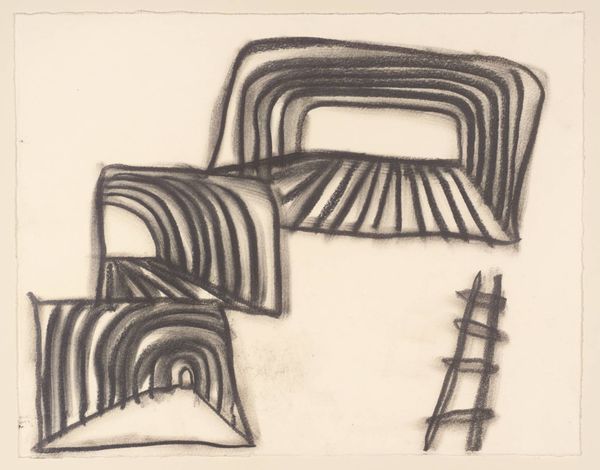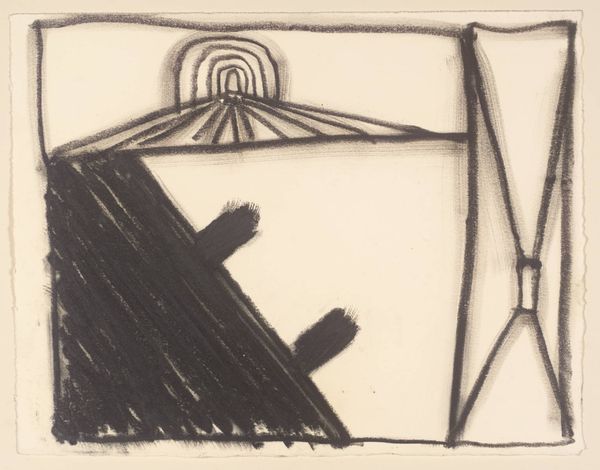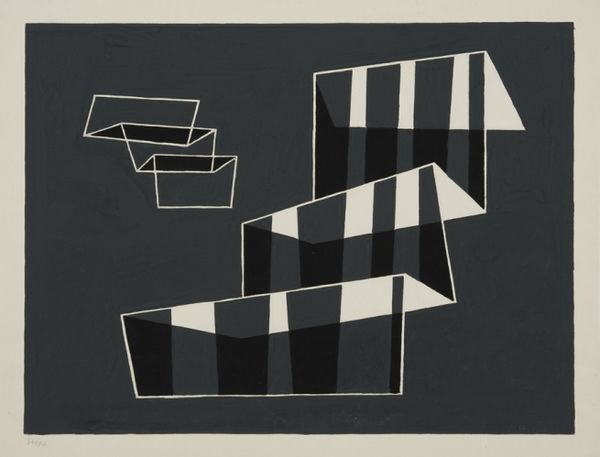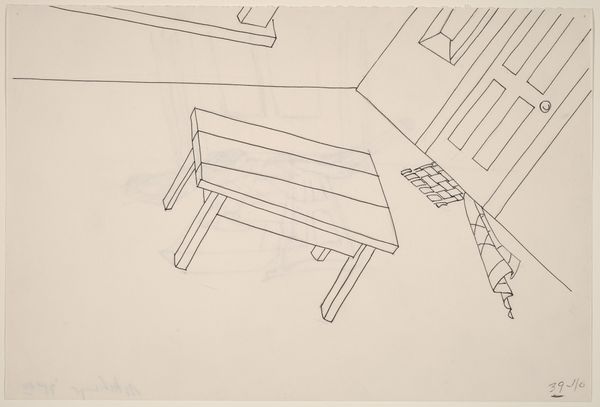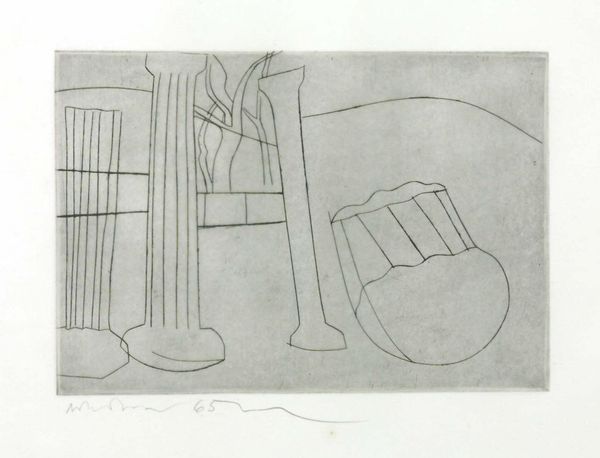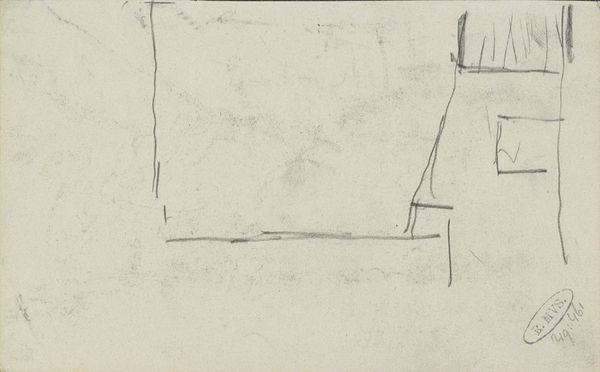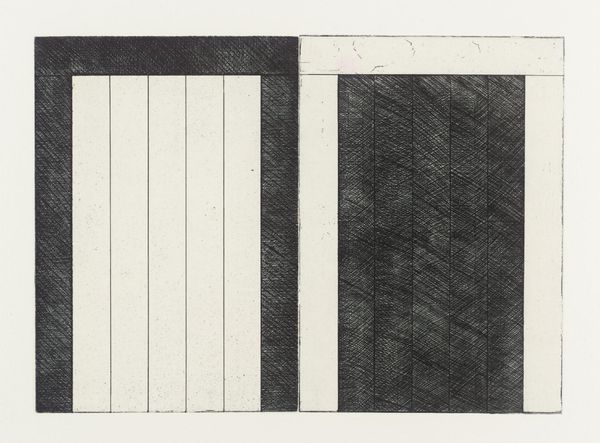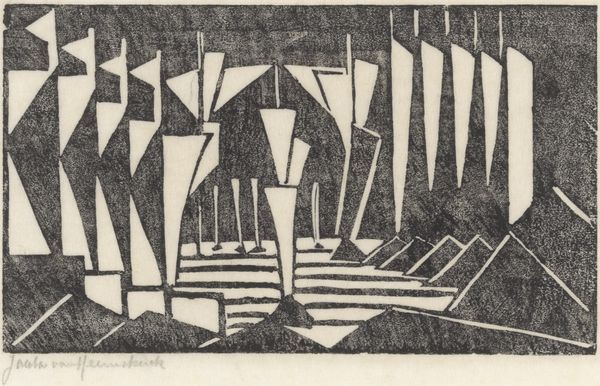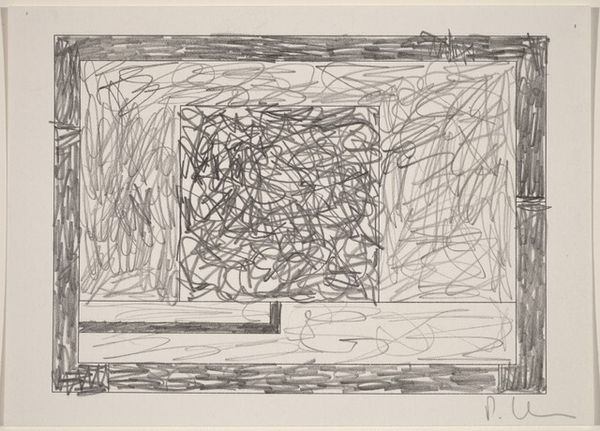
print, etching
# print
#
etching
#
landscape
#
geometric
#
abstraction
#
modernism
Dimensions: plate: 11.3 x 45 cm (4 7/16 x 17 11/16 in.) sheet: 20.8 x 53.8 cm (8 3/16 x 21 3/16 in.)
Copyright: National Gallery of Art: CC0 1.0
Editor: Dorothy Dehner’s "River Landscape I," an etching from 1958, really strikes me as a study in geometric forms. I’m curious, looking at the way the artist uses shapes and lines, what do you see in this piece from a formalist perspective? Curator: Indeed. Notice first the stark contrast achieved purely through line and tone. The composition relies heavily on the interplay of horizontal and vertical elements, forming a rigid structure. Do you see how Dehner balances the varying densities of line work to create depth, despite the monochrome palette? Editor: I do, the concentration of lines forming that central, almost box-like structure definitely makes it advance visually. Curator: Precisely. It creates a focal point, a nucleus around which the more ephemeral, linear shapes orbit. Furthermore, consider the rhythm established by the repeated triangular motifs—they animate the scene, imbuing it with a sense of dynamism even within the static medium of etching. Editor: So, by analyzing just the arrangement of forms and lines, we can appreciate Dehner's intent to abstract the natural world, focusing on essential structures rather than representational details. Curator: Exactly. By divesting the landscape of overt mimetic qualities, she directs our gaze to the underlying architecture of nature itself. Editor: This has really highlighted how analyzing form alone can unlock the artistic intentions behind a work. It’s like learning a new language. Curator: Precisely. Formalism offers a pathway into appreciating the sheer visual intelligence embedded within a work of art.
Comments
No comments
Be the first to comment and join the conversation on the ultimate creative platform.

